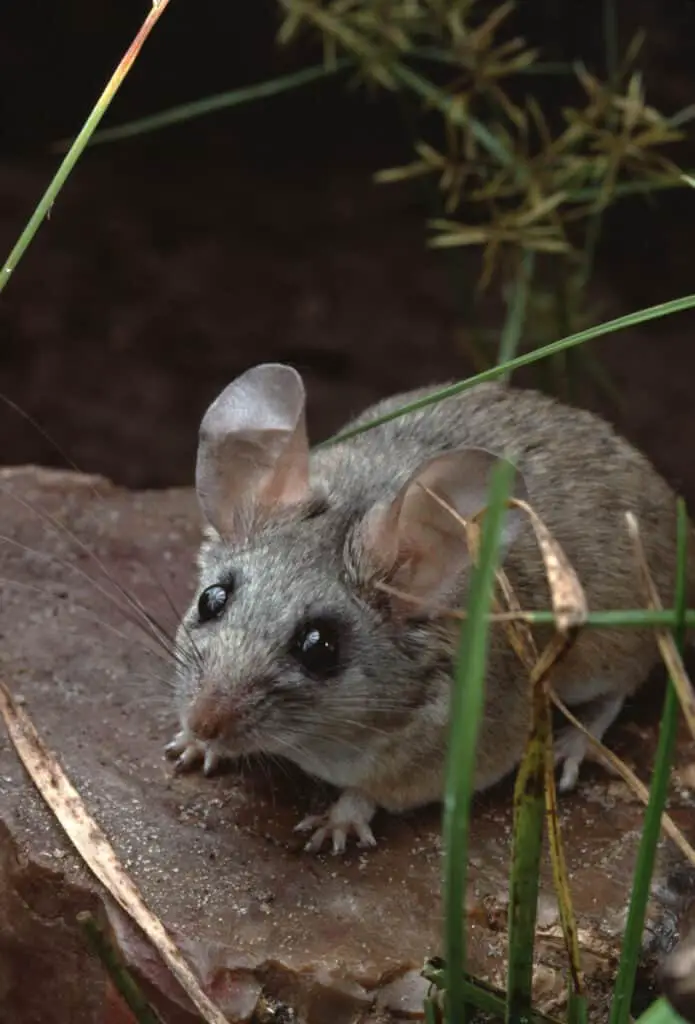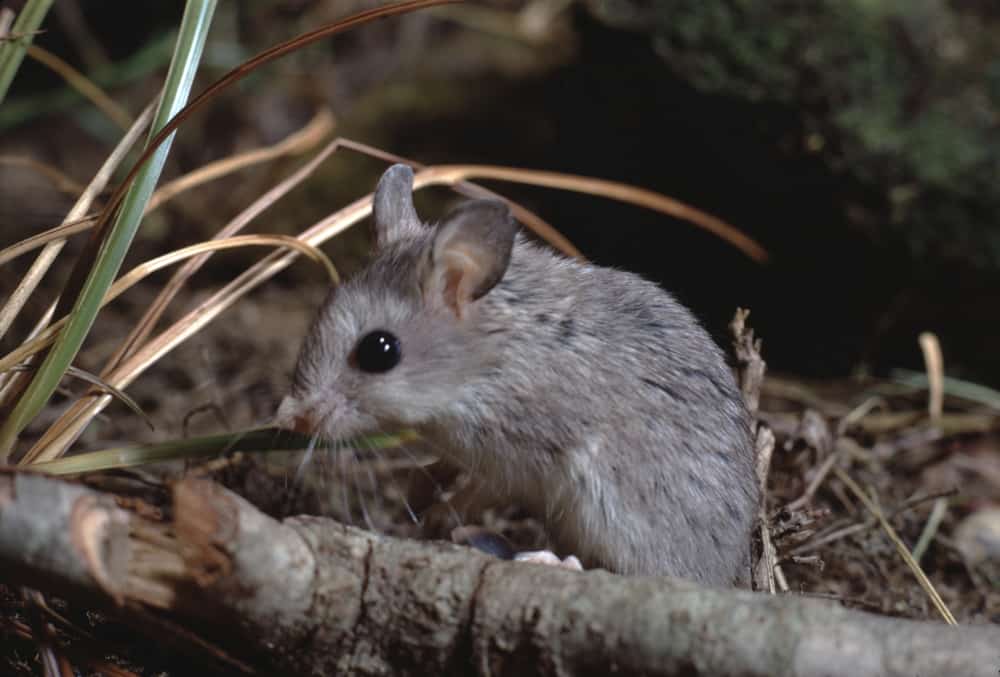Mice are small, agile rodents that belong to the family Muridae. They are found all over the world and have adapted to live in many different environments, including forests, grasslands, deserts and even cities.
Mice can be distinguished from other rodents by their pointed noses, large ears and long tails. Mice play an important role in many ecosystems as they serve as prey for various predators such as snakes, birds of prey and larger mammals. In addition to being food themselves, mice also help distribute seeds through their feces and contribute to soil health through burrowing activities.
However, mice can also be considered pests when they invade human homes or agricultural fields where they cause damage to property and crops. Despite this reputation as pests, mice remain fascinating creatures with unique behaviors that continue to capture the interest of scientists and animal enthusiasts alike.

Physical Characteristics Of Mice
Mice are small, furry rodents belonging to the family Muridae. They can be found in various habitats worldwide, ranging from forests and grasslands to urban areas.
Mice have a distinct physical appearance characterized by their pointed snouts, rounded ears, and long tails that make up about half of their body length. Their fur is typically brown or gray with lighter underbellies. The size of mice varies depending on the species, but they generally range from 5-10 cm in length and weigh between 12-30 grams.
Dietary preferences of mice vary widely depending on their habitat and available food sources. Some species are strict herbivores while others consume both plants and animals. Breeding habits also differ among mouse species; some breed year-round while others only during certain seasons.
Female mice usually give birth to litters of around five or six offspring after a gestation period of approximately three weeks. Despite being considered pests in many areas due to their tendency to damage crops and spread disease, mice play an important role in ecosystems as prey for larger predators and seed dispersers.
Distribution And Adaptation Of Mice
As if they were small soldiers marching through the land, mice have successfully adapted to various habitats on every continent except Antarctica. These adaptable critters have managed to live in a plethora of environments including forests, deserts, grasslands, and even urban areas.
When it comes to habitat preferences, there are more than 30 species that can be found all over the world. For example, deer mice prefer woodlands while house mice favor living near humans.
Mice have also developed several behavioral adaptations that allow them to survive in their respective habitats. Some species dig intricate burrows with multiple entrances and exits underground or at the base of trees for protection from predators. Others possess keen senses that enable them to detect threats quickly and evade danger by running away or hiding before being caught. Additionally, certain species like harvest mice are known for their ability to climb tall blades of grasses as an escape mechanism.
Through these unique behaviors and others yet undiscovered, mice continue to thrive in diverse landscapes worldwide.
Ecological Importance Of Mice
The distribution and adaptation of mice have allowed them to thrive in various habitats, including forests, grasslands, deserts, and even urban areas.
Mice are small rodents that play a crucial role in the food webs of many ecosystems because they serve as prey for larger animals such as owls, hawks, snakes, and foxes. Additionally, mice feed on seeds and insects that can harm crops or spread diseases.
However, habitat loss due to human activities has had significant effects on mouse populations worldwide. The destruction of natural habitats through deforestation, agricultural practices, and urbanization has forced mice to adapt to new environments or face extinction.
Changes in vegetation patterns also affect their food sources and mating behaviors. As a result, some species of mice have become endangered while others have thrived by adapting to anthropogenic landscapes.
Understanding the ecological importance of mice is essential for conservation efforts aimed at preserving biodiversity and ecosystem functioning amidst rapid environmental changes worldwide.
As such it becomes vital for us humans to take responsibility for our actions towards nature’s resources so that we do not end up disturbing the balance of these precious ecosystems where tiny creatures like mice play an important role too!
Role Of Mice As Prey And Seed Distributors
Predator-prey interactions play an important role in maintaining ecological balance.
Mice, being small and defenseless animals, are often preyed upon by a variety of predators such as birds of prey, snakes, and carnivorous mammals. However, their significance lies not only in their role as prey but also in the contribution they make to seed dispersal strategies.
Mice consume a wide range of plant material including fruits, berries, and seeds. While foraging for food, they inadvertently disperse seeds through fecal matter or by carrying them on their fur. This process helps plants colonize new areas and maintain genetic diversity within populations.
Additionally, mice contribute to soil fertility as their feces act as natural fertilizers that enrich the nutrient content of the soil.
Overall, despite being small and seemingly insignificant creatures in the grand scheme of things, mice play a vital part in maintaining ecosystem health through both predator-prey interactions and seed dispersal strategies.
Mice As Pests And Their Impact On Humans
Mice are not only fascinating creatures but also considered as pests in certain situations. They can cause damage to homes, gardens and crops by gnawing on wires, furniture, insulation materials etc. Furthermore, they carry diseases such as salmonella and hantavirus which pose a significant health risk to humans.
Mice control is therefore necessary to prevent infestations that could result in the spread of disease. There are various ways to control mice populations including rodent-proofing buildings, using traps or baits and hiring pest control professionals. Prevention measures include keeping food sources secured and reducing clutter where mice can hide.
Failure to address mouse infestations may lead to serious property damage costing homeowners thousands of dollars in repairs. Moreover, exposure to mouse droppings and urine can potentially lead to respiratory problems for individuals with compromised immune systems. Thus, it is important for homeowners and businesses alike to take steps towards effective mice control in order to protect themselves from potential health risks associated with these pesky critters.
Fascinating Behaviors Of Mice
Mice are social animals that exhibit a wide range of behaviors related to their interactions with other mice. They use vocalizations, body language, and pheromones to communicate with each other. Social interaction is essential for mice as it helps them establish dominance hierarchies, mate-selection, and group cohesion.
When housed together in groups or colonies, they engage in grooming behavior known as allo-grooming which strengthens social bonds. Additionally, mice display empathy towards their peers by exhibiting signs of distress when exposed to the pain of other mice.
Mice are also renowned for their problem-solving abilities. In laboratory settings, they have been shown to be adept at solving complex mazes and puzzles. Researchers have discovered that mice possess highly developed spatial memory skills allowing them to navigate environments effectively. Furthermore, they can learn from trial-and-error methods and retain information learned through experience. These cognitive abilities make mice valuable subjects for studying learning processes and developing treatments for human diseases such as Alzheimer’s disease and schizophrenia.
Some interesting facts about mouse behavior:
- Mice can recognize familiar individuals even after long periods apart.
- Dominant male mice often mark their territory using urine to deter rivals.
- Female mice will adopt orphaned pups from unrelated mothers if given the opportunity.
Overall, the fascinating behaviors exhibited by mice highlight the complexity of these small creatures’ lives beyond being mere pests or lab subjects. Their social interactions and problem-solving abilities showcase their intelligence and adaptive nature within different environments.

Conclusion
The mouse is a small, agile and curious animal that has adapted to various environments worldwide. Its physical characteristics include sharp incisors for gnawing, large ears for detecting predators, and long tails for balance.
Mice are found in every continent except Antarctica, adjusting to different climates by burrowing underground or seeking shelter in human-made structures. Despite their size, mice exhibit fascinating behaviors such as social bonding and communication through vocalizations and scent marking.
Mice play an essential role in the ecosystem as prey for larger animals such as snakes and birds of prey. Additionally, they contribute to seed dispersal through their feeding habits. However, mice can also be harmful pests causing damage to crops and transmitting diseases to humans.
They are intelligent creatures capable of learning complex tasks and problem-solving skills. Their intriguing behavior only adds to their mystique as we continue to study them further.
In conclusion, the mouse may seem like a tiny creature with little significance, but its impact on the environment and human society cannot be underestimated. From being a vital part of the food chain to being responsible for crop destruction and disease transmission, these rodents have proven themselves to be versatile survivors throughout history.

